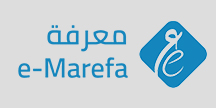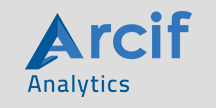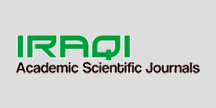Using Qualitative Methods as a Needs Analysis for Developing a Creative Writing Course: A Thematic Analysis
DOI:
https://doi.org/10.21271/zjhs.25.5.22Keywords:
Creative writing, course design, needs analysis, qualitative research, thematic analysis.Abstract
Designing a creative writing (CW) course involves a lengthy, non-linear and multifaceted process. Needs analysis can be used as a starting point for data collection to explore the needs of the course from the perspective of the involved key players and the related areas. This present study is the first round of needs analysis which is part of a larger PhD project. It uses qualitative methods of data collection, namely, non-participant unstructured observations and semi-structured interviews as the first round of data collection at the University of Birmingham (UoB). Thematic analysis has been used to interpret the data and categorise the recurring themes inductively, which will later be compared to the Subject Benchmark of Creative Writing in the UK. The results of this study will be used in the second round of data collection for needs analysis at Salahaddin University-Erbil (SUE) in the larger project that aims to design a CW course at English departments at SUE in the Kurdistan of Iraq (KRI).
References
Allwright, D., 1988. Observation in the language classroom. Essex: Longman.
Best, J.W. and Kahn, J.V., 2006. Research in education, 10th. London: Pearson Education.
Brown, J.D. and Rodgers, T.S., 2002. Doing second language research. Oxford: Oxford university press.
Burroway, J., (2011). Imaginative writing: Elements of Craft. New York: Penguin.
Galleymore, I. (2018, May 29). Personal Interview.
Ciesielska, M., Boström, K.W. and Öhlander, M., 2018. Observation methods. In Qualitative methodologies in organization studies (pp. 33-52). Cham: Palgrave Macmillan.
Gillham, B., 2008. Observation techniques: structured to unstructured. New York: Continuum International,
Hamdar, Z. (2018, June 27). Personal Interview.
Holeywell, K. 2009. The origins of a Creative Writing programme at the University of East Anglia, 1963–1966. New Writing, 6 (1): 15-24
Huhta, M., Vogt, K., Johnson, E. and Tulkki, H., 2013. Needs analysis for language course design: A holistic approach to ESP. Cambridge: Cambridge University Press.
Kennard, L. (2018, May 29). Personal Interview.
Li, E. (2018, March 20). Personal Interview.
Light, G. 2002. From the personal to the public: Conceptions of creative writing in higher education. Higher education, 43(2): 257-276
Long, M.H., 2005b. Methodological issues in learner needs analysis. In Second language needs analysis, pp.19-76. Cambridge: Cambridge University Press.
Nowell, L.S., Norris, J.M., White, D.E. and Moules, N.J., 2017. Thematic analysis: Striving to meet the trustworthiness criteria. International journal of qualitative methods, 16(1),
Mackey, A. and Gass, S.M., 2015. Second language research: Methodology and design. London: Laurence Erlbaum Associates.
Mills, P. (2006). The Routledge creative writing coursebook (p. 39). New York: Routledge.
Mozaffari, H. 2013. An Analytical Rubric for Assessing Creativity in Creative Writing. Theory & Practice in Language Studies, 3(12).
Mulhall, A., 2003. In the field: notes on observation in qualitative research. Journal of advanced nursing, 41(3), pp.306-313.
Myers, D. G., 1996. The Elephants Teach: Creative Writing since 1880. Chicago: University of Chicago Press.
O'Rourke, R., 2005. Creative writing: Education, culture and community. Leicester: NIACE.
Quality Assurance Agency for Higher Education (QAA), corp creator. (2019) Subject Benchmark Statement: Creative Writing, December 2019.
Quality Assurance Agency for Higher Education (QAA), corp creator. (2016) Subject Benchmark Statement: Creative Writing, February 2016. <http://dera.ioe.ac.uk/id/eprint/25755>
Rasool, H.A.F. and Al Bajalani, F.R.H., 2020. Assessment rubric for creative writing: the case of undergraduate students at English language department in KRI. Journal of Critical Reviews, 7(13).
Richards, J.C., 2001. Curriculum development in language teaching. Cambridge: Cambridge University Press.
Thongpanich, C. (2018, March 20). Personal Interview.
Tung, C. K. (2015). Assessment of Creative Writing: The Case of Singapore Secondary Chinese Language Curriculum. Universal Journal of Educational Research, 3(10), 655-662.
Van Allen, R., 1948. What Is Creative Writing? Elementary English, 25(3): 174-176.
Vyleta, D. (2018, September 12). Personal Interview.
Zieman, G.A., 2012. Participant observation. In Action research methods (pp. 49-67). New York: Palgrave Macmillan.
Downloads
Published
How to Cite
Issue
Section
License
Copyright (c) 2024 Hewa Ali Faqe Rasool , Fatimah Rasheed Hasan Al Bajalani

This work is licensed under a Creative Commons Attribution-NonCommercial-ShareAlike 4.0 International License.
Except where otherwise noted, content on this site is licenced
under a Creative Commons Attribution License 4.0 (CC BY- 4.0)










